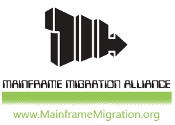System Migrations
Migration Steps
Large or small, simple or complex, all migrations adhere to a basic set of procedures. The amount of time each step takes depends on the scope of the project and the customer's time requirements. Usually, an application with a small number of programs written in a single language will take less time to convert and qualify, just as a more complex migration may require additional steps. In all cases, Datatek will identify and track each project milestone, adeptly refocusing priorities when needed. The following list illustrates basic Datatek migration procedures.
Step 1
The customer will deliver to Datatek all files needed for the migration, including program source code, macro/shell command files, data files, etc. Datatek expects all program source files to compile cleanly in the original environment upon delivery. Customer development may continue as normal.
Step 2
Datatek will evaluate the application's environment. This includes but is not limited to the following:
- a search for platform-specific usage (e.g., device access, system calls, directory structure, proprietary file formats, etc.)
- in a multi-language application, a determination of the appropriate target languages
Step 3
Datatek will run its migration tools, modifying them as necessary, against the supplied source files until all sources compile cleanly.
Step 4
The customer will evaluate the converted programs (typically, the appearance and behavior of the application's screens). This evaluation is usually performed at the Datatek site.
Step 5
Datatek will deliver the converted application to be installed on the customer's target system. Datatek, with input from the customer, will then set up the application's environment for testing, including the installation of any Datatek-provided software. Datatek will convert any data files as necessary.
Step 6
The customer will qualify the converted application. Datatek will resolve all conversion-related errors as they are reported.
Step 7
The customer will deliver to Datatek a final version of all relevant files and freeze source code modification.
Step 8
Datatek will convert all program source code or macro/shell command files that have been modified since the original files were delivered and return the newly converted files to the customer for final qualification.
Step 9
The customer will make a final qualification of the converted application. Datatek will resolve all errors as they are reported.
Step 10
Optionally, a practice cutover may be staged to test the environment and all associated devices. Datatek highly recommends a practice cutover.
Step 11
Datatek and the customer will cutover to the new system.
Next Step
View our Resources, including case studies, white papers and extensive FAQ
Migration Case Study
Discover How Datatek Helped a Major American Retailer Save $900,000 Per Year!
Migration Success Stories
Fortune 1000 Financial Services
A Fortune 1000 financial software and data center services provider wanted to migrate from their legacy platform to an Open System environment. Their software suite was written in a combination of PL/I, Assembler, and script/macro language. Database access was performed through a proprietary relational data manager.
More Information
- Migration Overview
- Migration Components
- Migration Steps
- Resources & White Papers
- Frequently Asked Questions
- Success Stories
Strategic Partners




How Can We Make This Website Better?
If you’ve discovered a mistake, an ambiguity, or that some important information is missing from this website, please let us know.
© Copyright Datatek, Inc. 1994-2024, All rights reserved. All trademarks belong to their respective owners.
